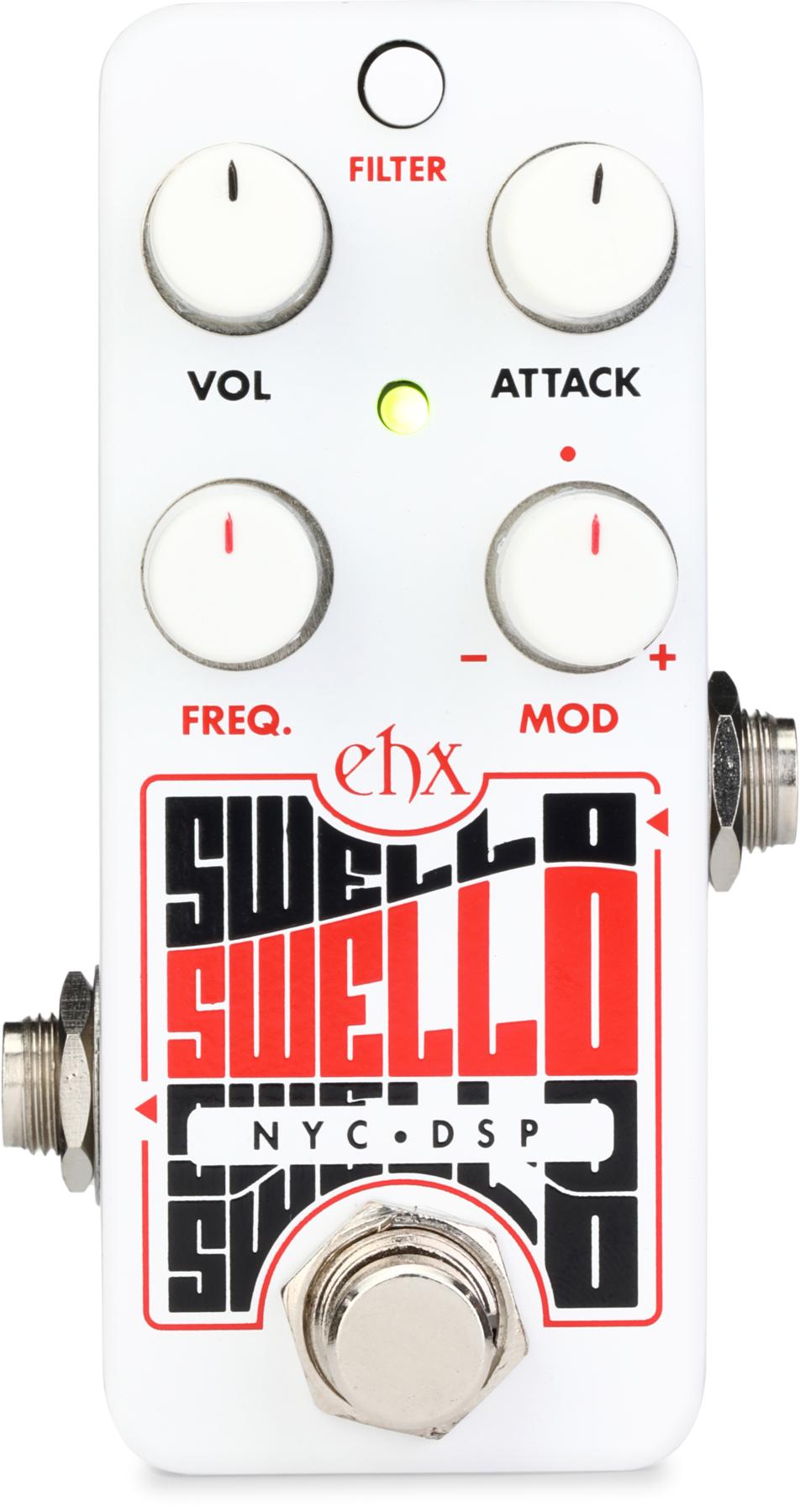TSVG Angry Jeff - Volume & Fuzz at 100%, Bias at full CCW, CW, CCW (Epiphone Dot & Fender Deluxe)
In the guitar industry, the term “boutique” is a little like “organic” in the farming world: Once both meant something was made in an uncomplicated, old-world kind of way by members of community too close-knit to dare abuse the term. But just as the agriculture industry discovered there was big money in the organic business, so too did guitar, amp, and pedal builders start bandying the “b” word with little regard to the craft, dedication, and principles that originally gave the term meaning.
Granted, a pedal built by a solder-huffing hermit is no guarantee something will sound good. But if there were a standard by which true handcrafted provenance could be judged, TSVG pedals would be a lock for certification. And as the Angry Jeff fuzz tested here reveals, handbuilt—from the right hands—can still mean stompboxes of exceptional quality that are a welcome deviation from the norm, too.
A Wolf in Cloth Wire Clothing
At a glance, the Angry Jeff doesn’t scream
“handcrafted!” For one thing, that universal
signifier of boutique-pedal status—an
enclosure painted by hand—is eschewed in
favor of a decal. And the lack of knob labels
suggests something cheekier than focus-group-driven wit. There’s not even the
vaguest suggestion it’s a fuzz. If you picked
Angry Jeff up in a recording studio without
any awareness of who or what TSVG is,
you’d just have to plug the dang thing in to
find out.
Just as surprising is what you find when you remove the back panel. There isn’t a circuit board anywhere. Instead, you see an ordered, many-tentacled mélange of cloth wire—all point-to-point wired to a beautiful array of AC 128 germanium transistors, and Mullard tropical fish and Sprague capacitors.
The functions of the unlabeled controls are fairly easy to decipher with a little trial and error. But there is a twist. While the knob at far left is a pretty standard volume/level control and the one in the middle is a fairly typical fuzz control, the third is a bias control that’s a big part of what differentiates the Angry Jeff from more classically voiced fuzzes.
The Many Moods of Jeff
The voices that lurk within the Angry Jeff
elude the most obvious sonic touchstones.
The germanium transistor-based circuit has
the spitty, hectic qualities of an old Fuzz
Face. It can even take on the burly, bossy
intensity of an old Triangle Muff, though it
lacks that pedal’s singing sustain. But it’s the
differences that make it special.
Entering Angry Jeff ’s world takes the willingness to experiment. Getting the pedal above unity gain means cranking the volume to about 2 o’clock. Once you’re there, things happen fast. Roll the volume back and crank the fuzz, and Jeff will spit out the buzzy, ’66-style sounds of a similarly configured germanium Fuzz Face. But the pedal is happiest when the volume is wide open, and that’s where you hear the unique colors of the Angry Jeff best.
The fuzz control is much more adaptable, and its range makes Jeff a chameleon. With fuzz and volume cranked, power chords take on the cool texture of chaos on top of a fat, smooth harmonic bed. It’s wilder than a Muff and more bossy than a Fuzz Face or Tone Bender. It enables first-position and power chords to pull of the cool trick of maintaining string-to-string clarity and articulation while fractured harmonics explode over the top. In this way, it’s like a Univox Super-Fuzz with fewer octave overtones.
Ratings
Pros:
Beautiful, handwired, point-to-point circuitry. Lots of unique tones.
Cons:
Could use a touch more sustain.
Tones:
Ease of Use:
Build/Design:
Value:
Street:
$155
Company
tsvgpedals.com
Rolling back the fuzz tames the spittier aspects and rounds the output in a way that makes driving barre-chord progressions deliciously savage. It also makes single notes a little more controlled and singing. That said, the Angry Jeff is not a sustain machine, and while you can shape lead tones into everything from hectic to nearly violin sweet (especially when you throw in some fast finger vibrato), you won’t get the even, lingering taper on a note you’d get from a Big Muff. And if you dig the sweeter-to-squirrelly potential of the Jeff but crave a little more sustain, you may need to count on throwing some boost and subtle delay in the mix.
The bias knob has an enormous effect on Jeff’s output. And like the fuzz control, it can be transformative. Cranked counterclockwise, it has less effect on the tone. And it’s here that you’ll get the most output and harmonic color. But turn it clockwise to starve the pedal of voltage, and unexpected things can happen. Between 9 o’clock and noon, the bias control has a smoothing effect on mids, creating a slightly boxy and wooly, but still very rich and sonorous lead tone that works great with bridge or neck pickups. Past noon, bias makes Angry Jeff progressively more rabid—creating a splintered, cracked, and chaotic mid- to high-frequency overtone field that gives power chords and leads a particularly feral edge.
The Verdict
The very individual, handbuilt Angry Jeff
is not a fuzz for everybody—particularly
not traditionalists who prefer working
within the well-known performance
parameters of the classics. But given how
confrontational it can sound, it’s remarkable
how effective it is at shape-shifting
for different musical settings. It’s probably
best suited for garage and avant artists
who like their tones big and rich but
a little less pretty. But if you’re willing
to experiment, it can deliver interesting
twists on Fuzz Face, Super-Fuzz, and
Big Muff tones. And if you’re willing to
accept that the path to extracting your
own unique voice from this beautifully
built pedal will be a bit indirect, chances
are you’ll uncover a universe of killer fuzz
textures along the way.














![Rig Rundown: Russian Circles’ Mike Sullivan [2025]](https://www.premierguitar.com/media-library/youtube.jpg?id=62303631&width=1245&height=700&quality=70&coordinates=0%2C0%2C0%2C0)







